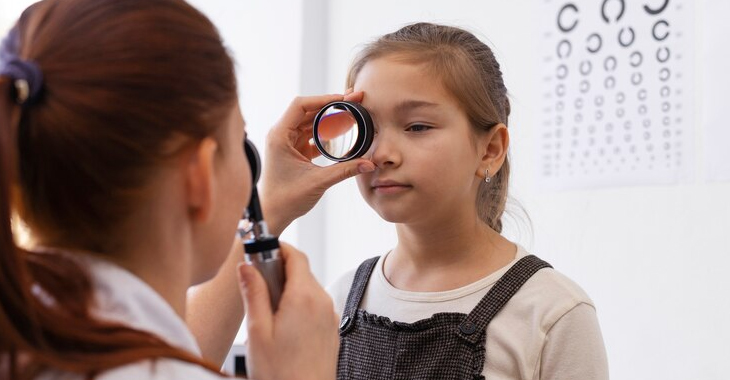If you’re struggling to get your kids off their devices and outside to play, here’s another reason to keep trying: Spending at least two hours outside per day is one of the most important things your children can do to protect their vision.
“We think that outdoor time is the best form of prevention for nearsightedness,” says Dr. Noha Ekdawi, a pediatric ophthalmologist in Wheaton, Ill.
And this is significant because the number of children with nearsightedness, or myopia, is rapidly increasing in the United States and many other parts of the world.
In the United States, 42% of people are myopic, up from 25% in the 1970s. By the age of young adulthood, up to 90% of people in some East Asian countries are myopic.
About 15 years ago, one or two of the children we saw had myopia. However, nowadays, “about 50% of my patients have myopia, which is an incredibly high number.”
Myopia occurs when the eyeball stretches and grows too long, making distant objects appear blurry.
When a child develops myopia, their eyeball continues to stretch, and the condition worsens over time. If they develop high myopia, they are more likely to develop serious eye problems later in life, including retinal detachments, glaucoma, and cataracts. It can even cause blindness.
There are treatments available to help slow the progression of myopia, such as prescription atropine eye drops, special soft disposable contact lenses called MiSight, and hard contacts worn overnight known as orthokeratology (or ortho-K). The most effective approach is to prevent children from developing myopia in the first place.
So, how does spending time outside help?
That’s what Ian Morgan wanted to know. Morgan is a myopia researcher at Australia’s National University. He noticed a few decades ago that myopia rates in East Asia were significantly higher than in Sydney.
He knew from animal studies that light causes the eye to release the neurotransmitter dopamine, which can slow the eyeball’s stretching. “Australians are famous for their outdoor-oriented lifestyle,” he believed. “Maybe there’s a link between getting outside a lot and preventing the development of myopia.”
Morgan’s research piqued the interest of Dr. Pei-Chang Wu, an ophthalmologist in Taiwan. As a retina specialist at Chang Gung Memorial Hospital in Kaohsiung, he had seen the effects of high myopia in patients as young as 10 who had tears in their retina. Some even had retinal detachment, which can cause blindness if not treated promptly.
Wu’s young son was in first grade at the time, and he was concerned about Taiwan’s alarmingly high rates of myopia. By the end of high school, approximately 90% of the teenagers have it. Wu claims that the academic culture in Taiwan’s primary schools did not allow for much outdoor recess. “Many teachers want students to practice their homework during recess,” according to him.
But Wu persuaded his son’s elementary school to increase outdoor time. He also recruited a control school. One year later, his son’s school had half the number of new myopia cases as the other school. “We saw the results – they were very successful,” says Wu.
He conducted additional research at more schools and eventually persuaded Taiwan’s Ministry of Education to encourage all primary schools to send students outside for at least two hours per day, every day. The program began in September 2010. After decades of rising rates, the prevalence of myopia among Taiwanese elementary school students began to fall, from an all-time high of 50% in 2011 to 45.1% in 2015. According to Ian Morgan, this is a significant achievement.
Other studies have found that outdoor time can reduce the likelihood of children developing myopia, even if they do a lot of close work, such as reading or staring at screens, which has also increased dramatically in recent years. Even if a child’s parents have myopia, spending time outside can help.
According to research, children should spend at least two hours per day outside, every day, in order to protect their vision. The younger you intervene, the better.
“To me, it’s like: eat your vegetables. “You need to spend time outside,” Ekdawi says.
It doesn’t matter whether it’s sunny or cloudy, or what the kids are doing. “You can go to the park, ride your bike, sit in a tree, or walk your dog. “All these things matter,” she says.
If you’re concerned about leaving time for homework, Ekdawi recommends having kids do it outside. All that matters is that they are outside.


